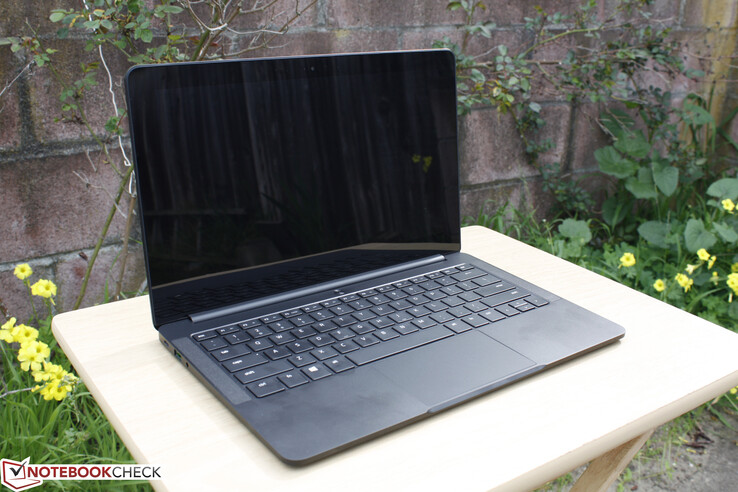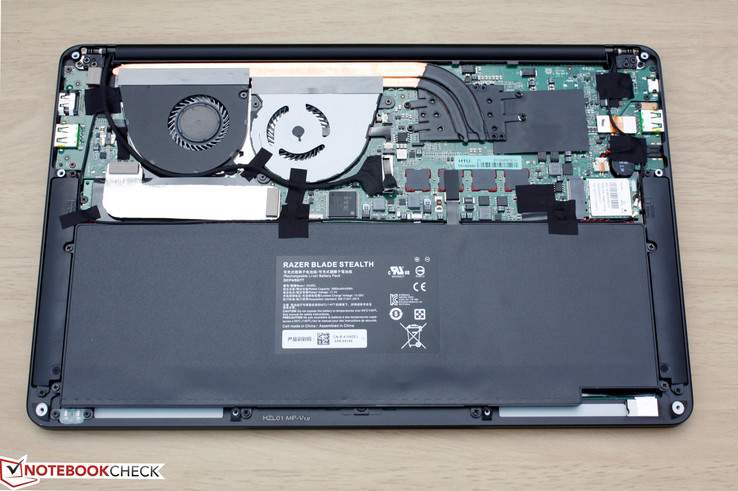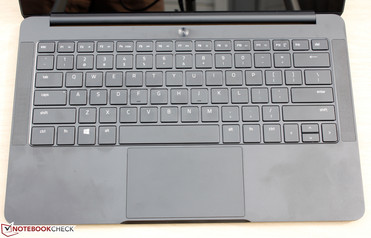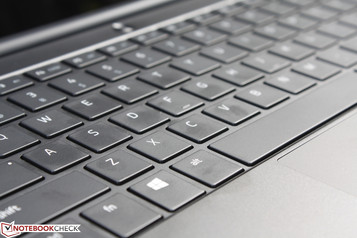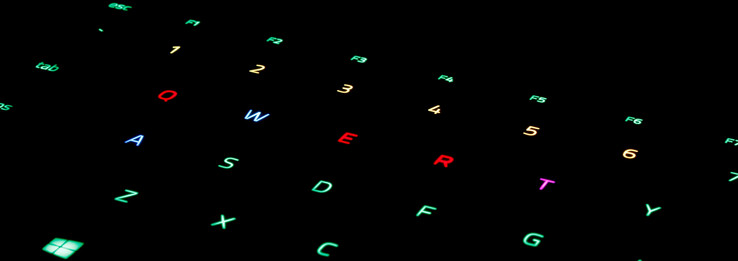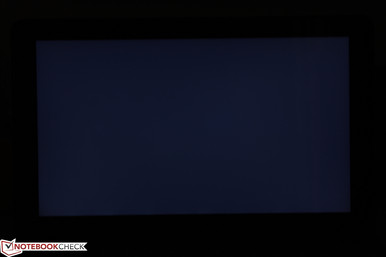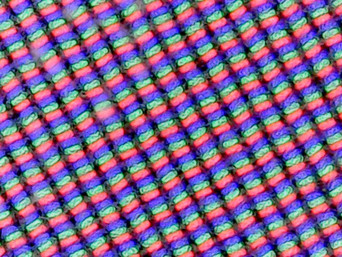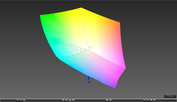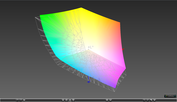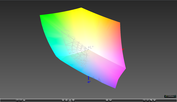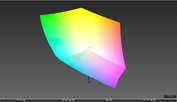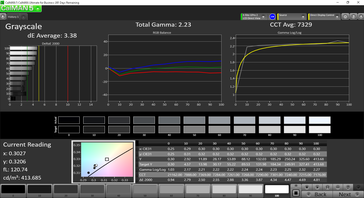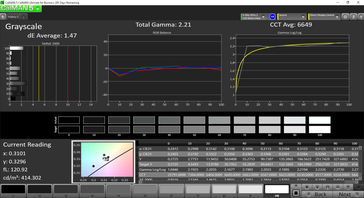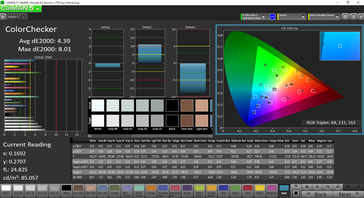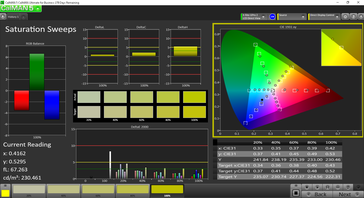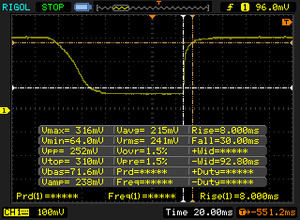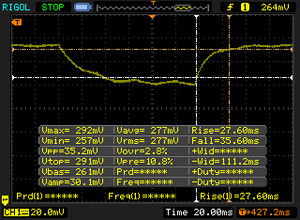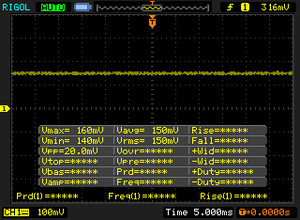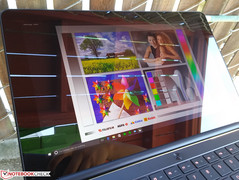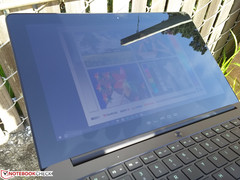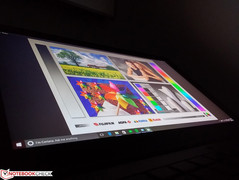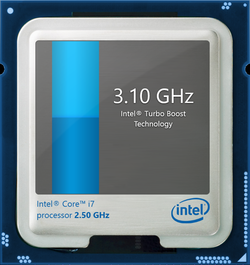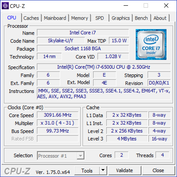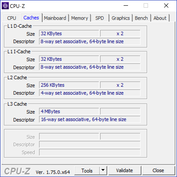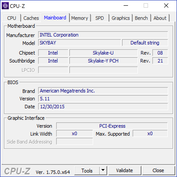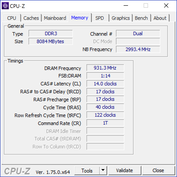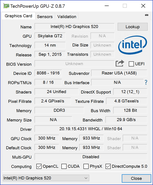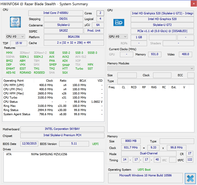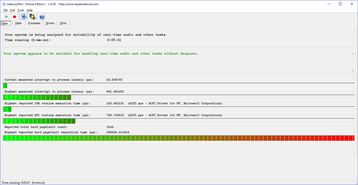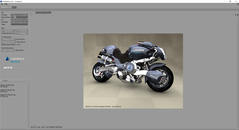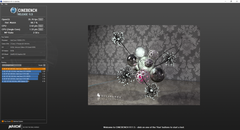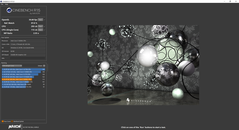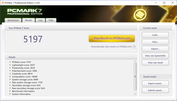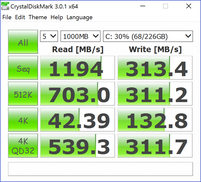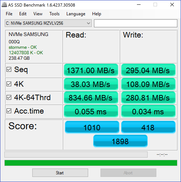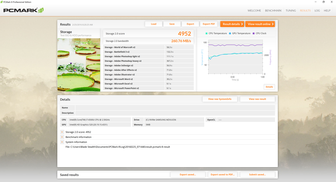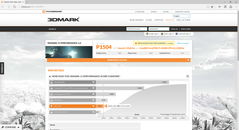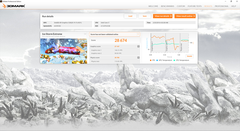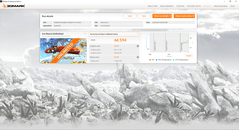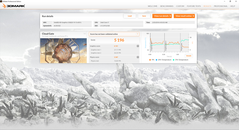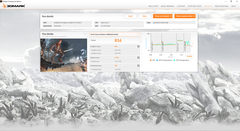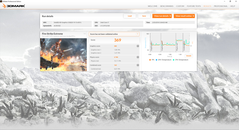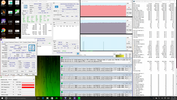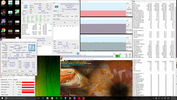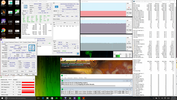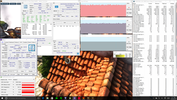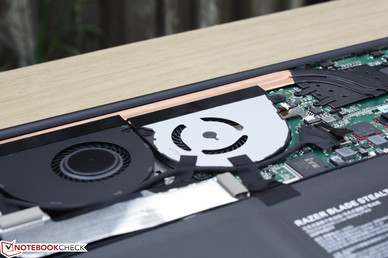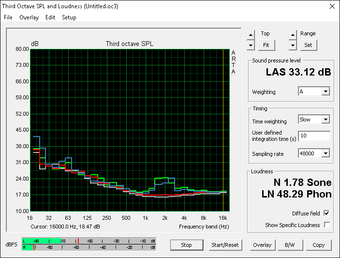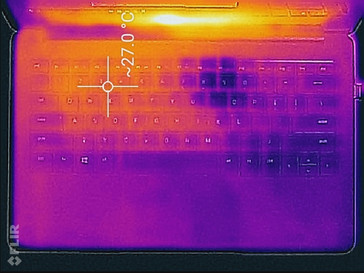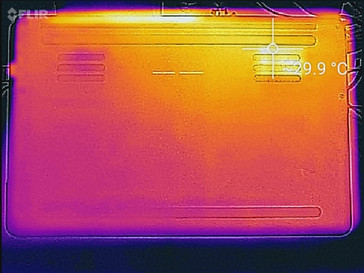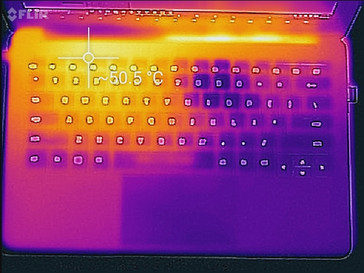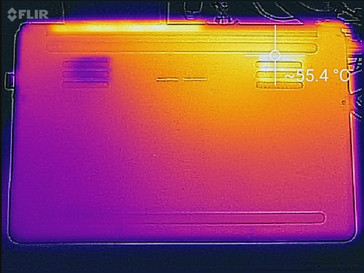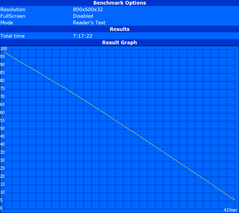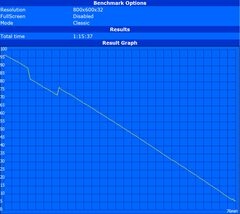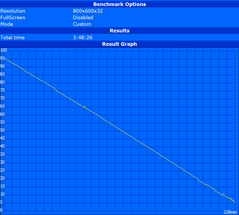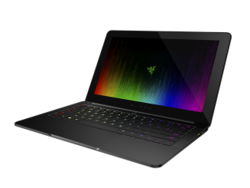Razer Blade Stealth Subnotebook Review

The 12.5-inch Razer Blade Stealth is the company's third notebook form factor following on the footsteps of the 14-inch Blade 14 and 17.3-inch Blade 17 Pro. As expected, it borrows heavily from its bigger siblings in terms of design philosophy for an ultrathin chassis without necessarily sacrificing quality.
In what can be considered an unexpected move from a company that markets largely towards gamers, the Blade Stealth lacks dedicated GPU options and comes equipped with a ULV Core i7-6500U CPU and integrated HD 520 GPU across all SKUs. Thus, the notebook is clearly aimed at the general subnotebook category alongside competitors like the recent MacBook 12 or XPS 13 and even convertibles like the Yoga 900 or Spectre x360 13. This also prevents any market overlap between the Blade Stealth and gaming-centric Blade 14 while opening up to a potentially wider audience.
The Blade Stealth starts at $999 with a QHD (2560 x 1440) panel and 128 GB SSD. Our test model is the higher-end SKU with a 4K (3840 x 2160) panel and 256 GB SSD. It's worth noting that the only differences between the current four SKUs are the display and storage size - everything else (including the 8 GB RAM and individually backlit keys) is identical.
Case
We can rave for paragraphs about how ludicrously thin and sleek the Blade Stealth is, but we're not here to shower it with praise for the sake of advertisement. More importantly, we want to know how the sharp metal chassis and smooth matte surfaces hold up against twists and depressions. Both the base and display are more rigid than what their thin builds would otherwise suggest. It takes a moderate amount of force to visibly twist the base and even more to cause slight creaking, so owners need not worry about having a cheaply made chassis. Pushing down on the center of the keyboard with a moderate amount of force will warp it just slightly.
The display exhibits excellent rigidity due to its wide hinge, small size, metal lid, and glass touchscreen. While the jet black chassis gives the impression of a unibody design, the hinge is actually plastic and consequently houses the antenna for the WLAN module. Nonetheless, the bar hinge is sufficiently tight and with no display rocking all the way up to its maximum angle of roughly 150 degrees.
When compared to other notebooks of similar size, the 12.5-inch Razer is just as thin as the 12.0-inch MacBook 12 while having a larger footprint than both the Apple and the recently released 13.3-inch XPS 13 9350. There's no denying that the Blade Stealth has quite the wide display bezel at about 23 mm compared to just 7 mm on the XPS 13, so it's unsurprising that it can be as long and wide as some 13.3-inch notebooks. Razer tells us that the larger dimensions are necessary in order to properly integrate the high-end touchscreen. Nonetheless, the Blade Stealth is naturally portable and lighter than the MacBook Pro Retina 13 (1.6 kg vs 1.3 kg). The 12.5-inch EliteBook Folio 1020 is slightly lighter (1.2 kg vs. 1.3 kg) due in part to its weaker hardware.
Connectivity
Ports are limited, of course, but we appreciate the fact that the system ships with USB Type-C Gen. 2 instead of Gen. 1 like on the MacBook 12. This means that the Blade Stealth supports Thunderbolt 3 natively for a wide array of extensions provided that you have the adapters for it. This same port handles charging as well, so connecting various USB Type-C accessories may prevent the system from running on mains.
The system lacks a SD reader of any kind just like on the Blade 14. This is compared to the 12.5-inch EliteBook Folio 1020, which manages to at least integrate a MicroSD reader.
Communication
The dual-band M.2 Killer Wireless-ac 1535 WLAN card provides theoretical transfer rates of of up to 867 Mbps with integrated Bluetooth 4.1. We experienced no connectivity or unexpected dropout issues during our time with the test unit. There are unfortunately no WWAN options, which would have made the Blade Stealth an even better travel companion.
Accessories
Included extras are almost non-existent outside of the power adapter, Razer sticker, Quick Start guide, and small cleaning cloth. USB-to-RJ45 and other adapters would have been a neat addition like on the Asus Zenbooks or even a small carrying case like on the Spectre x360 13.
Razer offers a wide range of branded accessories, though most (if not all) do not yet make use of the USB Type-C port.
Maintenance
The bottom panel pops out surprisingly easily with just a single T5 Hex screwdriver. Users are granted direct access to the CPU, fans, M.2 2280 SSD, battery, and M.2 2230 WLAN card. The RAM modules are soldered and non-upgradeable.
Warranty
Manufacturer warranty is 12 months with the option to extend for a total of 24 months. It's worth noting that Gigabyte offers 24 months as its global standard as do a number of resellers in the United States.
Input Devices
Keyboard
Razer is one of the first (alongside Lenovo and Aorus) to launch a notebook with individually backlit keys. Thus, the feature is a unique aesthetic selling point for the Blade Stealth as the lighting effects and colors (16.8 million per key) are unlike anything currently available in this form factor.
Aside from the admittedly fun Chroma features, the keyboard is functionally standard fare with no dedicated auxiliary keys and unfortunately half-sized Arrow keys. Furthermore, secondary key functions (with either fn or Shift) do not light up, so keys for brightness control, volume control, and others can be difficult to see.
As for tactility and feedback, the keys provide very shallow travel even for a notebook this size. This is especially true when compared to the XPS 13 where the keys protrude higher, have deeper travel, and with a firmer and quieter feedback. While the typing experience is far from bad, it is very light and a step below most other Ultrabooks in terms of comfort.
Touchpad
The smooth plastic touchpad (10.5 x 6.5 cm) provides ample surface area for scrolling and multi-touch gestures. It is, however, ever so slightly smaller than the touchpad on the MacBook 12 while being larger than on the EliteBook Folio 1020. The Synaptics software can recognize up to four fingers and we experienced no major issues with movements or inputs with the touchpad surface.
The two integrated mouse keys on the bottom half of the touchpad are shallow in travel as expected, but with satisfactorily firm feedback and auditory clicks. The center of the bottom edge is more difficult to press in order to better separate the left and right keys. Still, we find it easier and more accurate to simply double-tap on the touchpad to click.
Display
4K resolution (3840 x 2160) on a 12.5-inch panel is absolutely insane in the best and worst ways possible. Its PPI of 352.5 is one of the densest for its notebook size class. Razer is promising 100 percent AdobeRGB coverage (or 70 percent for the QHD SKU) and our own measurements show contrast levels deeper than 1000:1 with a brighter backlight than many of its competitors. Combine this with the mandatory touchscreen option and almost no uneven backlight bleeding and it becomes obvious that Razer has put in a lot of effort into providing a high-class display.
A quick search for its Sharp LQ125D1JW33 panel shows that the same (or at leasy very similar) IGZO panel is also used on the Toshiba Satellite Radius 12 P20W. The drawback to such a dense pixel count is that while Windows will generally scale correctly, there will always be a handful of applications that do not and will appear incredibly small onscreen as a result.
| |||||||||||||||||||||||||
Brightness Distribution: 93 %
Center on Battery: 415 cd/m²
Contrast: 1343:1 (Black: 0.309 cd/m²)
ΔE ColorChecker Calman: 3.78 | ∀{0.5-29.43 Ø4.79}
ΔE Greyscale Calman: 3.38 | ∀{0.09-98 Ø5}
99.3% sRGB (Argyll 1.6.3 3D)
85.1% AdobeRGB 1998 (Argyll 1.6.3 3D)
97.2% AdobeRGB 1998 (Argyll 3D)
99.2% sRGB (Argyll 3D)
83.7% Display P3 (Argyll 3D)
Gamma: 2.23
CCT: 7329 K
| Razer Blade Stealth UHD i7-6500U 12.5", 3840x2160 | Dell XPS 13 2016 i7 256GB QHD 13.3", 3200x1800 | Lenovo Yoga 900-13ISK 80MK 13.3", 3200x1800 | HP EliteBook Folio 1020 G1 12.5", 2560x1440 | Apple MacBook 12 (Early 2015) 1.1 GHz 12", 2304x1440 | Asus Zenbook UX303UB-DH74T 13.3", 3200x1800 | |
|---|---|---|---|---|---|---|
| Display | -21% | -23% | -17% | -17% | -26% | |
| Display P3 Coverage (%) | 83.7 | 63.6 -24% | 63.2 -24% | 67.3 -20% | 67.6 -19% | 60.9 -27% |
| sRGB Coverage (%) | 99.2 | 93.6 -6% | 88.7 -11% | 96.2 -3% | 95.6 -4% | 85.4 -14% |
| AdobeRGB 1998 Coverage (%) | 97.2 | 65.5 -33% | 64.9 -33% | 68.9 -29% | 68.7 -29% | 62.5 -36% |
| Response Times | 29% | 40% | 18% | |||
| Response Time Grey 50% / Grey 80% * (ms) | 63.2 ? | 40 ? 37% | 38.8 ? 39% | 44.4 ? 30% | ||
| Response Time Black / White * (ms) | 38 ? | 30 ? 21% | 22.4 ? 41% | 36 ? 5% | ||
| PWM Frequency (Hz) | 4900 ? | 1316 | 1389 | |||
| Screen | -14% | -31% | -12% | 7% | -55% | |
| Brightness middle (cd/m²) | 415 | 285 -31% | 319.8 -23% | 306 -26% | 345 -17% | 291.4 -30% |
| Brightness (cd/m²) | 399 | 281 -30% | 302 -24% | 297 -26% | 325 -19% | 270 -32% |
| Brightness Distribution (%) | 93 | 90 -3% | 88 -5% | 80 -14% | 90 -3% | 84 -10% |
| Black Level * (cd/m²) | 0.309 | 0.18 42% | 0.835 -170% | 0.3141 -2% | 0.324 -5% | 0.954 -209% |
| Contrast (:1) | 1343 | 1583 18% | 383 -71% | 974 -27% | 1065 -21% | 305 -77% |
| Colorchecker dE 2000 * | 3.78 | 4.89 -29% | 2.68 29% | 3.01 20% | 1.62 57% | 4.63 -22% |
| Colorchecker dE 2000 max. * | 7.2 | 2.51 65% | ||||
| Greyscale dE 2000 * | 3.38 | 5.16 -53% | 2.35 30% | 3.13 7% | 1.88 44% | 5.65 -67% |
| Gamma | 2.23 99% | 2.15 102% | 2.09 105% | 2.33 94% | 2.55 86% | 2.16 102% |
| CCT | 7329 89% | 7106 91% | 6975 93% | 6484 100% | 6411 101% | 6320 103% |
| Color Space (Percent of AdobeRGB 1998) (%) | 85.1 | 59 -31% | 57 -33% | 62 -27% | 61.8 -27% | 55.2 -35% |
| Color Space (Percent of sRGB) (%) | 99.3 | 93 -6% | 88 -11% | 95.5 -4% | 85.2 -14% | |
| Total Average (Program / Settings) | -2% /
-9% | -5% /
-19% | -15% /
-13% | -5% /
1% | -21% /
-38% |
* ... smaller is better
Our own measurements with an X-Rite spectrophotometer reveal an AdobeRGB and sRGB coverage of 85 percent and 99 percent, respectively. The manufacturer claims 100 percent AdobeRGB coverage with the Sharp IGZO IPS panel, but the gamut itself is off-centered at least according to the ICM profile produced by our spectrophotometer. Thus, measured coverage is less than advertised.
Colors are still incredibly deep with a wider gamut than the displays on most (if not all) consumer subnotebooks. The Blade Stealth rivals panels found on larger high-end mobile workstations such as those from the HP ZBook series or custom panels on certain Clevo barebones.
Further display analyses show good grayscale and excellent AdobeRGB coverage. A quick calibration is recommended to both improve grayscale and color accuracy even further. The display appears to be slightly less accurate when representing lighter colors than deeper colors out-of-the-box.
Display Response Times
| ↔ Response Time Black to White | ||
|---|---|---|
| 38 ms ... rise ↗ and fall ↘ combined | ↗ 8 ms rise | |
| ↘ 30 ms fall | ||
| The screen shows slow response rates in our tests and will be unsatisfactory for gamers. In comparison, all tested devices range from 0.1 (minimum) to 240 (maximum) ms. » 96 % of all devices are better. This means that the measured response time is worse than the average of all tested devices (20.3 ms). | ||
| ↔ Response Time 50% Grey to 80% Grey | ||
| 63.2 ms ... rise ↗ and fall ↘ combined | ↗ 27.6 ms rise | |
| ↘ 35.6 ms fall | ||
| The screen shows slow response rates in our tests and will be unsatisfactory for gamers. In comparison, all tested devices range from 0.165 (minimum) to 636 (maximum) ms. » 97 % of all devices are better. This means that the measured response time is worse than the average of all tested devices (31.7 ms). | ||
Screen Flickering / PWM (Pulse-Width Modulation)
| Screen flickering / PWM not detected | |||
In comparison: 53 % of all tested devices do not use PWM to dim the display. If PWM was detected, an average of 8152 (minimum: 5 - maximum: 343500) Hz was measured. | |||
Working outdoors under shade is not difficult due to the bright backlight and IPS panel. In fact, the Blade Stealth is probably the best glossy consumer notebook for use outdoors if viewability is a top concern. The backlight is not powerful enough to overcome direct sunlight, however, so eyestrain can still occur under such conditions.
Performance
All current Blade Stealth SKUs make use of a dual-core Core i7-6500U CPU with integrated HD 520 graphics. This ULV Skylake processor is becoming very popular on the latest Ultrabooks and convertibles including the XPS 13, Envy 13, Yoga 900, and ZenBook UX303. In the Razer, the Intel core can run as low as 500 MHz in Power Saver mode all the way up to 3.1 GHz for single-threaded operations.
RAM is fixed at 8 GB DRR3 dual-channel with no options for DDR4 or even 16 GB.
Processor
Raw processor performance according to CineBench benchmarks is roughly 10 to 15 percent behind the Core i7-6650U in the high-end Surface Pro 4 tablet. The processor also shows healthy leads over the previous generation i5-5200U Broadwell core and especially the i5-4200U Haswell core. Standard voltage processors still show significant leads over the i7-6500U including older quad-core models like the i7-4700HQ.
An important distinction between the Blade Stealth and the MacBook 12 is that the latter is limited to weaker Core M class CPUs of much lower TDP. Thus, Razer shows even more significant gains over Apple in terms of raw CPU performance.
More comparisons and benchmarks on the Core i7-6500U can be found on our dedicated CPU page.
| wPrime 2.10 - 1024m (sort by value) | |
| Razer Blade Stealth UHD i7-6500U | |
| Lenovo IdeaPad Y50 | |
| Microsoft Surface Pro 4 Core i7 | |
| HP Spectre x360 15-ap011dx | |
| Toshiba Tecra A50-C1510W10 | |
| Lenovo IdeaPad Z40-59422614 | |
* ... smaller is better
System Performance
PCMark benchmarks rank the Blade Stealth in the same ballpark as its SSD-based 13-inch competitors. The EliteBook Folio 1020 falls behind by more than a few steps due to the much weaker Core M CPU.
We experienced no hardware or software issues specific to the notebook during our time with the test unit.
| PCMark 7 - Score (sort by value) | |
| Razer Blade Stealth UHD i7-6500U | |
| Dell XPS 13 9350 WQXGA | |
| Lenovo Yoga 900-13ISK 80MK | |
| Asus Zenbook UX303UB-DH74T | |
| HP EliteBook Folio 1020 G1 | |
| PCMark 7 Score | 5197 points | |
| PCMark 8 Home Score Accelerated v2 | 2868 points | |
| PCMark 8 Creative Score Accelerated v2 | 3795 points | |
| PCMark 8 Work Score Accelerated v2 | 3603 points | |
Help | ||
Storage Devices
A single M.2 slot is available with no options for secondary storage. Our unit is equipped with a 256 GB Samsung MZVLV256 NVMe SSD that easily outperforms SATA III-based SSDs found in most other competitors. Sequential write speeds, however, are rather average at just under 300 MB/s. The 512 GB NVMe SSD in the Dell XPS 13 offers nearly double the write rates of the Razer and generally better performance across the board.
See our table of SSDs and HDDs for additional benchmarks and comparisons.
| Razer Blade Stealth UHD i7-6500U HD Graphics 520, 6500U, Samsung PM951 NVMe MZ-VLV256D | Dell XPS 13 9350 WQXGA Iris Graphics 540, 6560U, Samsung PM951 NVMe 512 GB | Lenovo Yoga 900-13ISK 80MK HD Graphics 520, 6500U, Samsung SSD PM871 MZNLN512HCJH | HP EliteBook Folio 1020 G1 HD Graphics 5300, 5Y51, Samsung PM851 Series MZMTE256HMHP | Apple MacBook 12 (Early 2015) 1.1 GHz HD Graphics 5300, 5Y31, Apple SSD AP0256 | Asus Zenbook UX303UB-DH74T GeForce 940M, 6500U, CUK Cyclone SSD 1TB | |
|---|---|---|---|---|---|---|
| AS SSD | 64% | -12% | -46% | -48% | -31% | |
| Copy Game MB/s (MB/s) | 289.2 | 753 160% | 298.7 3% | 176.7 -39% | 392.8 36% | |
| Copy Program MB/s (MB/s) | 224.3 | 271.8 21% | 249.6 11% | 158.3 -29% | 233.7 4% | |
| Copy ISO MB/s (MB/s) | 304 | 1041 242% | 364.5 20% | 258.7 -15% | 464.3 53% | 382.5 26% |
| Score Total (Points) | 1898 | 3158 66% | 1129 -41% | 931 -51% | 1556 -18% | 882 -54% |
| Score Write (Points) | 418 | 664 59% | 429 3% | 275 -34% | 168 -60% | 373 -11% |
| Score Read (Points) | 1010 | 1679 66% | 458 -55% | 438 -57% | 927 -8% | 333 -67% |
| Access Time Write * (ms) | 0.034 | 0.031 9% | 0.039 -15% | 0.044 -29% | 0.051 -50% | |
| Access Time Read * (ms) | 0.055 | 0.046 16% | 0.054 2% | 0.137 -149% | 0.228 -315% | 0.14 -155% |
| 4K-64 Write (MB/s) | 280.8 | 492 75% | 303 8% | 174.1 -38% | 94.4 -66% | 261.1 -7% |
| 4K-64 Read (MB/s) | 835 | 1497 79% | 374.8 -55% | 361.1 -57% | 838 0% | 256.9 -69% |
| 4K Write (MB/s) | 108.1 | 116.5 8% | 80.6 -25% | 77.9 -28% | 26.26 -76% | 71.3 -34% |
| 4K Read (MB/s) | 38.03 | 38.29 1% | 32.29 -15% | 26.13 -31% | 17.55 -54% | 25.99 -32% |
| Seq Write (MB/s) | 295 | 559 89% | 454.6 54% | 229.5 -22% | 475.8 61% | 409.8 39% |
| Seq Read (MB/s) | 1371 | 1442 5% | 505 -63% | 507 -63% | 716 -48% | 505 -63% |
* ... smaller is better
GPU Performance
Raw graphics performance according to 3DMark benchmarks is slightly above the HD Graphics 5600 and well below the Iris Graphics 540, which is exactly where we expect the HD Graphics 520 to be. Mainstream Nvidia GPUs from the 800M or 900M series will still outperform the integrated Intel solution found on the Blade Stealth.
| 3DMark 11 | |
| 1280x720 Performance (sort by value) | |
| Razer Blade Stealth UHD i7-6500U | |
| Dell XPS 13 9350 WQXGA | |
| MSI GT72 | |
| Lenovo ThinkPad Yoga 12 20DK002EPB | |
| Fujitsu LifeBook E554 | |
| HP EliteBook 840 G1 | |
| 1280x720 Performance GPU (sort by value) | |
| Razer Blade Stealth UHD i7-6500U | |
| Dell XPS 13 9350 WQXGA | |
| MSI GT72 | |
| Lenovo ThinkPad Yoga 12 20DK002EPB | |
| Fujitsu LifeBook E554 | |
| HP EliteBook 840 G1 | |
| 3DMark 11 Performance | 1504 points | |
| 3DMark Ice Storm Standard Score | 42940 points | |
| 3DMark Cloud Gate Standard Score | 5196 points | |
| 3DMark Fire Strike Score | 816 points | |
| 3DMark Fire Strike Extreme Score | 369 points | |
Help | ||
Gaming Performance
Gaming options will be limited to less demanding titles as the Blade Stealth is not a gaming machine. Newer or more intensive titles are essentially unplayable on even the lowest of graphical settings let alone anything on the native QHD or 4K resolution. If your gaming habits consist of LoL, DotA 2, or Starcraft II, however, then the integrated Intel graphics will be satisfactory on lower 1080p settings.
See our dedicated GPU page on the HD Graphics 520 for more benchmarks and comparisons.
| StarCraft II: Heart of the Swarm | |
| 1366x768 Medium | |
| Microsoft Surface Book Core i5 | |
| Razer Blade Stealth UHD i7-6500U | |
| Asus Q302LA-BHI | |
| Toshiba Tecra A50-C1510W10 | |
| 1366x768 High AA:on | |
| Microsoft Surface Book Core i5 | |
| Razer Blade Stealth UHD i7-6500U | |
| Asus Q302LA-BHI | |
| Toshiba Tecra A50-C1510W10 | |
| low | med. | high | ultra | |
|---|---|---|---|---|
| Tomb Raider (2013) | 68 | 35.1 | 23.5 | |
| StarCraft II: Heart of the Swarm (2013) | 171.9 | 58 | 31.4 | 17.6 |
| Thief (2014) | 25.3 | 15 |
Stress Test
Thin notebooks tend to be more sensitive to throttling issues. The Blade Stealth exhibits higher core temperatures than usual when under high loads at 80 C or above to better maintain Turbo Boost for both the CPU and GPU. Unigine Heaven stress, for example, sees the GPU maintaining a steady clock rate of 1000 MHz whilst the CPU fluctuates with an almost always active Turbo Boost. Users will not need to worry about performance throttling when running intensive applications other than certain benchmarks with unrealistic loads. Prime95+FurMark, for example, will cause the CPU to reach 90 C before throttling kicks in to prevent even higher temperatures.
Running on battery power will not reduce CPU or GPU performance. A 3DMark 11 run on batteries produced Physics and Graphics scores of 4325 points and 1377 points, respectively, compared to 4373 points and 1334 points when on mains.
| CPU Clock (GHz) | GPU Clock (MHz) | Average Core Temperature (C) | |
| Prime95 Stress | 2.8 | -- | 80 - 85 |
| FurMark Stress | -- | 900 | 83 |
| Prime95 + FurMark Stress | 1.4 | 800 - 850 | 83 |
| Unigine Heaven Stress | 2.4 - 3.0 | 1000 | 79 |
Emissions
System Noise
Twin fans spinning in opposite directions and two asymmetric heat pipes make up the cooling system for the Blade Stealth. While larger than expected, this was likely necessarily to reduce the chances of throttling as a single fan solution (like on the XPS 13 or Spectre x360 13) probably proved insufficient based on the already high core temperatures in our stress test section.
The fans never idle, but are nonetheless almost inaudible when browsing or during low loads. Heavier loads like Unigine Heaven will bump fan noise only slightly to a measured 33.1 dB(A) while maximum load with Prime95+FurMark will bump the fans to 34 dB(A). The fans can be even louder up to almost 39 dB(A), but this is only temporary with Prime95+FurMark before CPU throttling kicks in to reduce heat output and fan speed down to the 33 dB(A) range. In general, fan noise is low no matter the real-world workload despite the superthin build.
Some alternatives like the MacBook 12 and EliteBook Folio 1020 G1 have no active cooling with weaker processor options to compensate.
We were able to notice very slight coil noise (electronic whining) only when connected to mains. This may or may not be specific to our test unit and some users may not notice the high-pitched noise.
| Razer Blade Stealth UHD i7-6500U HD Graphics 520, 6500U, Samsung PM951 NVMe MZ-VLV256D | Dell XPS 13 2016 i7 256GB QHD HD Graphics 520, 6500U, Samsung PM951 NVMe MZ-VLV256D | Lenovo Yoga 900-13ISK 80MK HD Graphics 520, 6500U, Samsung SSD PM871 MZNLN512HCJH | Asus Zenbook UX303UB-R4100T GeForce 940M, 6500U, Micron M600 MTFDDAK512MBF | Toshiba Satellite Radius 12 P20W-C-106 HD Graphics 520, 6500U, Samsung SSD PM871 MZNLN256HCHP | Acer Aspire R13 R7-372T HD Graphics 520, 6200U, 2x Hynix HFS128G39MND M.2 (RAID 0) | |
|---|---|---|---|---|---|---|
| Noise | -6% | -0% | -6% | -12% | -9% | |
| off / environment * (dB) | 28.9 | 31.3 -8% | ||||
| Idle Minimum * (dB) | 29.3 | 31.8 -9% | 29.7 -1% | 31.5 -8% | 32.5 -11% | 31.5 -8% |
| Idle Average * (dB) | 29.3 | 31.8 -9% | 29.8 -2% | 31.5 -8% | 32.6 -11% | 31.5 -8% |
| Idle Maximum * (dB) | 29.3 | 34.8 -19% | 30 -2% | 31.5 -8% | 32.6 -11% | 31.7 -8% |
| Load Average * (dB) | 33.1 | 34.8 -5% | 32 3% | 35.9 -8% | 41 -24% | 39.7 -20% |
| Load Maximum * (dB) | 38.8 | 34.8 10% | 38.5 1% | 38.2 2% | 41 -6% | 39.4 -2% |
* ... smaller is better
Noise level
| Idle |
| 29.3 / 29.3 / 29.3 dB(A) |
| Load |
| 33.1 / 38.8 dB(A) |
 | ||
30 dB silent 40 dB(A) audible 50 dB(A) loud |
||
min: | ||
Temperature
Surface temperatures when idling are generally cool with noticeable hot spots directly adjacent to the heat pipes and CPU on both sides of the notebook. Due to the positioning of the cooling system and processor, the left half of the notebook will always feel warmer than the right half. The delta is fortunately never large enough to be uncomfortable during everyday use.
When under unrealistic maximum loads (Prime95+FurMark), we were able to record surface temperatures reaching over 55 C on the bottom surface closest to the processor. The physically smaller XPS 13 is even warmer under the same extreme conditions while others like the Yoga 900, EliteBook Folio 1020, Satellite Radius 12, and MacBook 12 all manage to stay under 50 C at all times.
(-) The maximum temperature on the upper side is 47.1 °C / 117 F, compared to the average of 35.9 °C / 97 F, ranging from 21.4 to 59 °C for the class Subnotebook.
(-) The bottom heats up to a maximum of 55.4 °C / 132 F, compared to the average of 39.3 °C / 103 F
(+) In idle usage, the average temperature for the upper side is 25.5 °C / 78 F, compared to the device average of 30.8 °C / 87 F.
(+) The palmrests and touchpad are reaching skin temperature as a maximum (35.6 °C / 96.1 F) and are therefore not hot.
(-) The average temperature of the palmrest area of similar devices was 28.2 °C / 82.8 F (-7.4 °C / -13.3 F).
Speakers
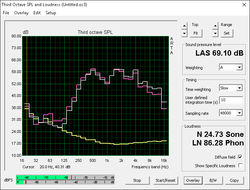
The stereo front-facing speakers are sufficient for audio playback considering the size of the unit. However, quality is ordinary and nothing special with measurements showing a clear lack of bass. Louder volume settings will not introduce any unattended static. Maximum volume is softer compared to larger notebooks, but will be more than satisfactory for the sole user.
Energy Management
Power Consumption
Power draw (with keyboard backlight disabled) is noticeably more demanding than other notebooks in the same category in almost all tested conditions. This may simply be due to the denser screen or the system's better Turbo Boost resilience under stressful conditions. The Zenbook UX303UB draws more power under load than the Blade Stealth since it carries a dedicated Nvidia GPU.
| Off / Standby | |
| Idle | |
| Load |
|
Key:
min: | |
| Razer Blade Stealth UHD i7-6500U HD Graphics 520, 6500U, Samsung PM951 NVMe MZ-VLV256D | Dell XPS 13 2016 i7 256GB QHD HD Graphics 520, 6500U, Samsung PM951 NVMe MZ-VLV256D | HP EliteBook Folio 1020 G1 HD Graphics 5300, 5Y51, Samsung PM851 Series MZMTE256HMHP | Apple MacBook 12 (Early 2015) 1.1 GHz HD Graphics 5300, 5Y31, Apple SSD AP0256 | Asus Zenbook UX303UB-R4100T GeForce 940M, 6500U, Micron M600 MTFDDAK512MBF | Microsoft Surface Pro 4, Core i5, 128GB HD Graphics 520, 6300U, Samsung MZFLV128 NVMe | |
|---|---|---|---|---|---|---|
| Power Consumption | 23% | 55% | 55% | 17% | 42% | |
| Idle Minimum * (Watt) | 9 | 6.8 24% | 3.4 62% | 1.7 81% | 3.2 64% | 4.4 51% |
| Idle Average * (Watt) | 12.8 | 10 22% | 6.7 48% | 5.3 59% | 7.6 41% | 9 30% |
| Idle Maximum * (Watt) | 16.8 | 10.5 37% | 7.5 55% | 6 64% | 8 52% | 10.7 36% |
| Load Average * (Watt) | 35.7 | 30.2 15% | 14.6 59% | 18.5 48% | 47 -32% | 19.6 45% |
| Load Maximum * (Watt) | 39.3 | 33.6 15% | 18.4 53% | 29.3 25% | 55 -40% | 19.9 49% |
* ... smaller is better
Battery Life
Runtimes are disappointing at just under 4 hours of constant WLAN use (150 nits setting, Balanced profile, looping browser script, keyboard backlight off). Competing 12-inch and 13-inch notebooks can last for hours longer under similar conditions. The similarly equipped Toshiba Satellite Radius 12 lasts for roughly as long as our Razer. The shorter runtimes correlate well with the generally higher power consumption readings.
Charging from near empty to 100 percent will take roughly 2.5 hours. Its 45 W power adapter is very compact at just ~11 x 3.5 x 2.7 cm.
| Razer Blade Stealth UHD i7-6500U 45 Wh | Dell XPS 13 9350 WQXGA 56 Wh | Lenovo Yoga 900-13ISK 80MK 66 Wh | HP EliteBook Folio 1020 G1 36 Wh | Apple MacBook 12 (Early 2015) 1.1 GHz 40 Wh | Asus Zenbook UX303UB-R4100T 50 Wh | |
|---|---|---|---|---|---|---|
| Battery runtime | 46% | 77% | 80% | 141% | 87% | |
| Reader / Idle (h) | 7.3 | 10.1 38% | 14.1 93% | 11 51% | 23.5 222% | 16.6 127% |
| WiFi v1.3 (h) | 3.8 | 5.2 37% | 6.7 76% | 6.9 82% | 7.6 100% | 6.8 79% |
| Load (h) | 1.3 | 2.1 62% | 2.1 62% | 2.7 108% | 2.6 100% | 2 54% |
Pros
Cons
Verdict
The Blade Stealth injects a big dose of Razer's signature style into the ultrathin subnotebook market. Everything about it exhumes character in ways that make "normal" Ultrabooks from manufacturers like Lenovo or Dell feel envious. On top of all this, Razer has managed to bring individually backlit keys to a category of notebooks that most other manufacturers will likely never introduce.
Look beyond the polished aesthetics and you get a quality chassis that easily matches what veteran manufacturers offer in this screen size. The display itself is in a league of its own as it provides a brighter backlight and with deeper colors than essentially all of its competitors currently in the market. The former makes the notebook that much easier to use outdoors while the latter will be appreciated by professional digital artists.
What's preventing this from being a must-own Ultrabook is the average battery life and keyboard feedback. Current 12- and 13-inch alternatives in the market can easily outlast the Blade Stealth on a single charge. Key travel and tactility are too shallow and light, respectively, and will only make it more difficult for desktop users to make the transition. We find the XPS 13, MacBook 12, and Yoga 900 to be comparatively easier to use for this reason.
As for performance, we appreciate the fact that the system won't throttle when subjected to heavy loads and won't artificially drop CPU or GPU performance when running on battery power. However, you can only get so much out of a ULV dual-core processor, so more power-hungry users who tend to do heavy multi-tasking, editing, and/or Photoshop work on the otherwise beautiful display will be yearning for a bit more hardware oomph.
Outside of a few drawbacks, the sub $1000 starting price makes the Blade Stealth surprisingly competitive in the subnotebook space. In fact, we would recommend the less expensive QHD SKU just to alleviate the inevitable scaling issues and to squeeze out longer runtimes than our 4K SKU test unit. The very high AdobeRGB coverage of the 4K SKU is overkill for basic applications like word processing, browsing, and light gaming.
Razer's latest subnotebook offers a couple of unique hardware features not found anywhere else for its size. It's a respectable alternative to what's currently available with a sleeker and more aggressive design to boot.
Razer Blade Stealth UHD i7-6500U
- 03/03/2016 v5 (old)
Allen Ngo




